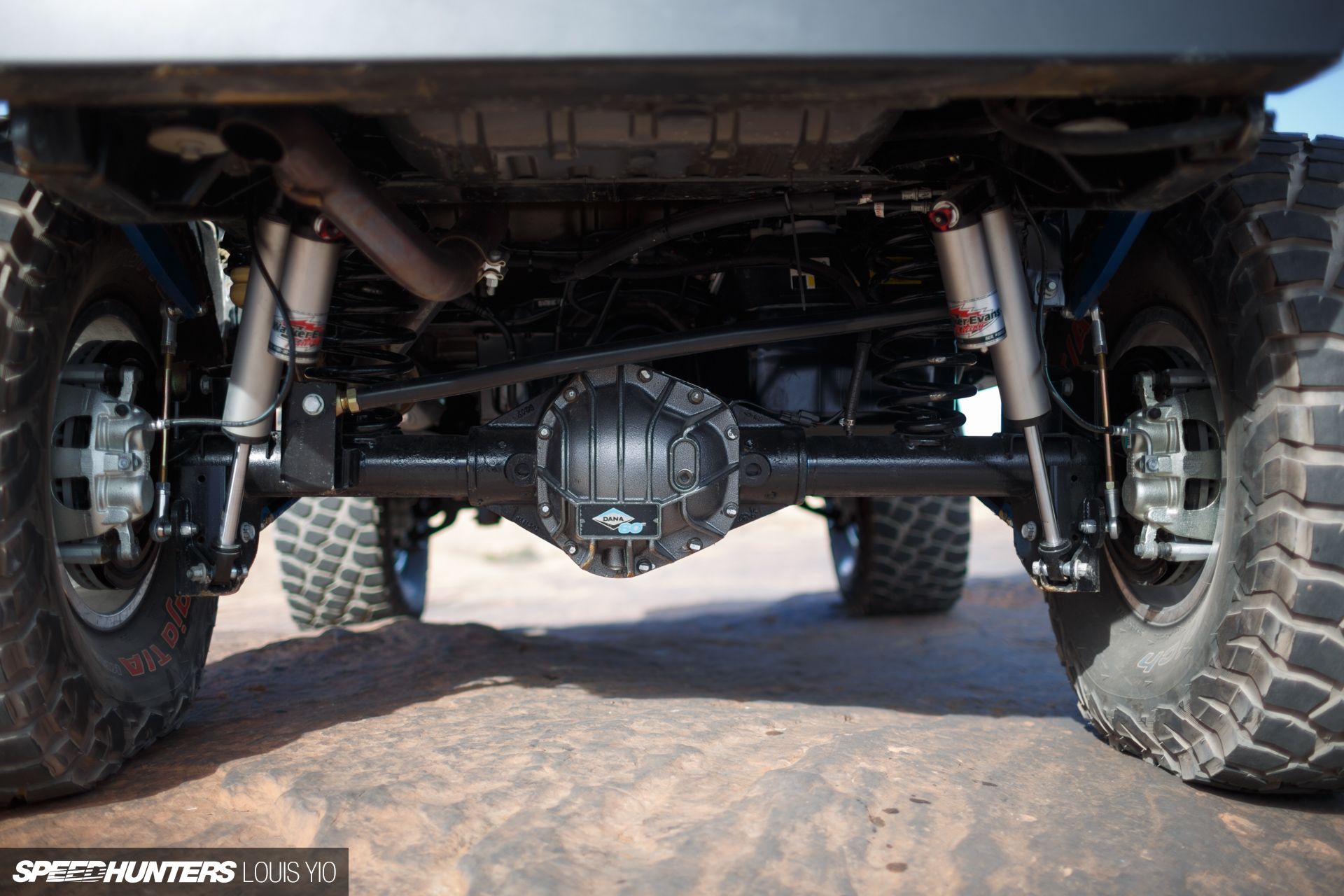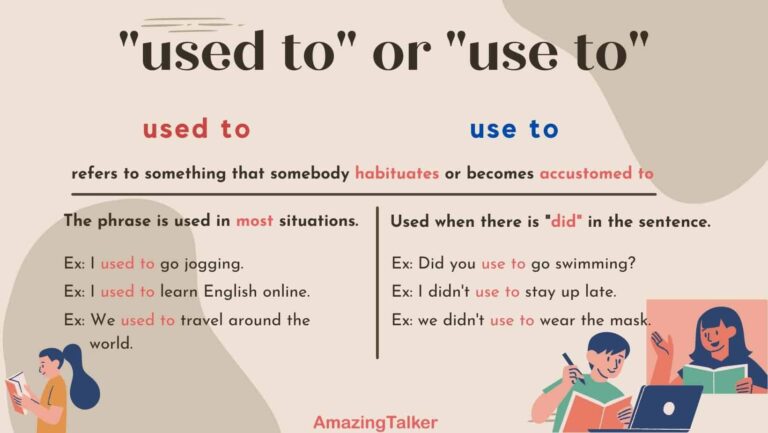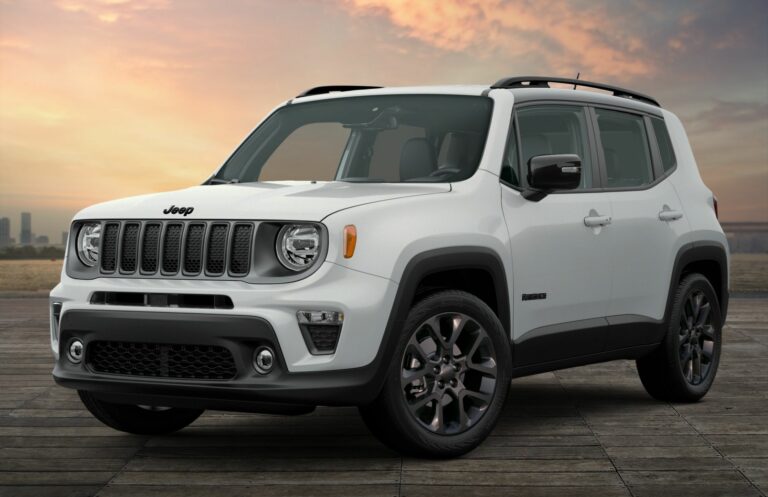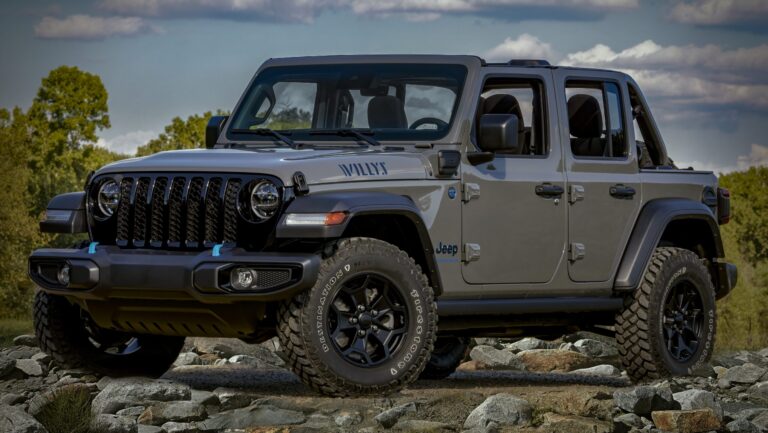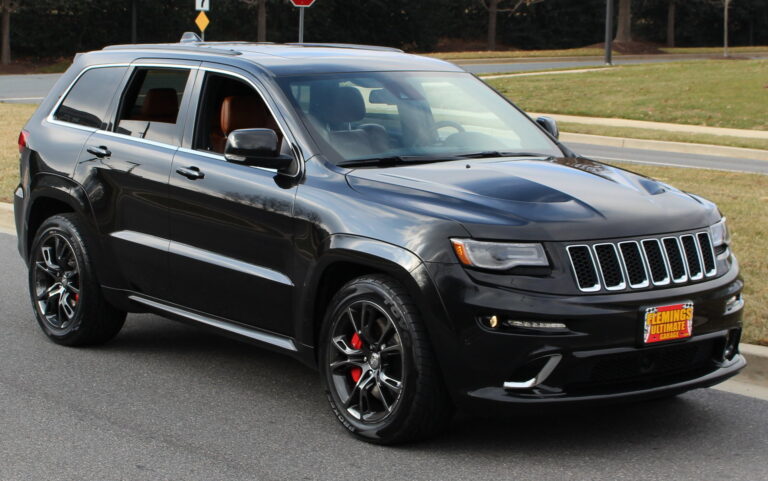Jeep Dana 60 For Sale: The Ultimate Guide to Upgrading Your Off-Road Beast
Jeep Dana 60 For Sale: The Ultimate Guide to Upgrading Your Off-Road Beast jeeps.truckstrend.com
For serious off-road enthusiasts and those pushing the limits of their Jeep, the stock axles often become the weakest link. When it comes to unyielding strength, legendary durability, and unparalleled performance on the most challenging terrains, one name consistently rises above the rest: the Dana 60. The phrase "Jeep Dana 60 For Sale" isn’t just about a component; it represents a pivotal upgrade, a commitment to extreme capability, and the foundation for a truly bulletproof build. This comprehensive guide will delve into everything you need to know about finding, evaluating, and integrating a Dana 60 into your Jeep, transforming it from capable to virtually unstoppable.
Why Choose a Dana 60 for Your Jeep? The Powerhouse Advantage
Jeep Dana 60 For Sale: The Ultimate Guide to Upgrading Your Off-Road Beast
The Dana 60 is not merely an axle; it’s an engineering marvel renowned for its robust construction and exceptional load-bearing capacity. While stock Jeep axles like the Dana 30 or Dana 44 are adequate for light to moderate off-roading, they quickly reach their limits when faced with larger tires (37 inches and above), powerful engines, aggressive driving, or demanding obstacles. Here’s why the Dana 60 is the gold standard for serious Jeep builds:
- Unmatched Strength & Durability: The Dana 60 boasts a significantly larger ring and pinion gear set compared to its smaller counterparts, enabling it to handle immense torque without fear of breakage. Its axle tubes are typically thicker and stronger, resisting bending under heavy loads or impacts. The axle shafts themselves are beefier, often featuring larger splines, further reducing the risk of snapping under extreme articulation or sudden shock loads.
- Accommodates Larger Tires: This is perhaps the primary driver for many upgrades. With a Dana 60, running 40-inch, 42-inch, or even larger tires becomes a reality, opening up new possibilities for conquering obstacles that were previously impassable. The increased strength ensures that the axle can withstand the leverage and rotational forces generated by such massive rubber.
- Superior Aftermarket Support: The Dana 60 has been a staple in heavy-duty applications for decades, leading to an expansive aftermarket. This means a vast selection of gearing options, locking differentials (lockers), chromoly axle shafts, heavy-duty differential covers, and specialized braking systems are readily available. This modularity allows for precise customization to suit any build requirement or terrain.
- Future-Proofing Your Rig: Investing in Dana 60s from the outset, or as a major upgrade, prevents a cascade of future axle-related issues. It means you won’t be upgrading your Dana 30 to a Dana 44, only to find you need a Dana 60 later. It’s a "buy once, cry once" philosophy that saves money and headaches in the long run.
Types of Dana 60 Axles Commonly Found for Sale

When searching for "Jeep Dana 60 For Sale," you’ll encounter two primary categories, each with its own advantages and considerations:
1. OEM (Original Equipment Manufacturer) Pulls
These are Dana 60 axles sourced from heavy-duty trucks, primarily Ford Super Duty (F-250/F-350), Dodge Ram 2500/3500, and Chevrolet/GMC 2500HD/3500HD models.
- Pros: Generally more affordable than aftermarket options, widely available in salvage yards and private sales, and built to withstand significant abuse from the factory.
- Cons:
- Width Differences: Most OEM Dana 60s are "full-width" (around 67-70 inches WMS-to-WMS – Wheel Mounting Surface), which is significantly wider than typical Jeep widths (e.g., JK is ~65", TJ/YJ ~60"). This requires wider fenders, increased tire coverage, and may affect trailering or tight trail navigation.
- Lug Patterns: OEM Dana 60s typically come with an 8-lug bolt pattern, meaning you’ll need new 8-lug wheels or wheel adapters, which can be a weak point.
- Mounting & Steering: Spring perches, control arm mounts, shock mounts, and steering linkages will almost certainly need to be cut off and re-welded in the correct positions and angles for your specific Jeep model.
- High Pinion (HP) vs. Low Pinion (LP): For front axles, a high pinion design is highly preferred. This positions the pinion gear above the axle centerline, improving driveshaft angle, especially with lifted Jeeps, and providing stronger gear tooth engagement under forward load. Many rear OEM Dana 60s are low pinion, which is less critical for a rear axle but still good to be aware of.


2. Aftermarket/Custom Dana 60s
These axles are purpose-built by specialized manufacturers like Dynatrac, Currie Enterprises, G2 Axle & Gear, Spidertrax, and others.
- Pros:
- Jeep-Specific Widths: Often available in widths tailored to popular Jeep models (e.g., JK, TJ, JL) for a more "bolt-in" fit.
- Correct Lug Patterns: Can be ordered with 5-on-5, 5-on-5.5, or 8-lug patterns to match your existing wheels or preferences.
- Enhanced Strength: Many aftermarket Dana 60s use thicker tubes, stronger forging, and come with chromoly axle shafts and premium lockers as standard or optional upgrades.
- Direct Bolt-In (Often): Designed with correct mounting brackets for specific Jeep models, significantly reducing fabrication time and cost.
- Cons: Significantly more expensive, often costing several times more than a used OEM pull, especially when built with all the desired internals.
Key Considerations When Buying a Dana 60 for Your Jeep
The decision to buy a Dana 60 is a significant one. Here are crucial factors to weigh before making a purchase:
- Front vs. Rear Application: Ensure you’re buying the correct axle for the front or rear. A high pinion Dana 60 is paramount for the front axle to optimize driveshaft angles and strength.
- Axle Width (WMS-to-WMS): Measure your current axle width and determine your desired width. Full-width axles offer stability but require more fender clearance and may pose issues on tight trails. Aftermarket options often provide Jeep-specific narrow widths.
- Gear Ratio: Match the gear ratio of your existing axle (if only upgrading one) or plan for a new ratio that suits your tire size and engine/transmission combination. Re-gearing is an additional cost.
- Condition (Used vs. New/Rebuilt):
- Used OEM: Inspect thoroughly for bent tubes, cracked welds, excessive rust, worn splines, and play in the pinion or wheel bearings. Ask about the donor vehicle’s history.
- New/Rebuilt: Offers peace of mind but comes at a higher price. Understand what "rebuilt" entails (new bearings, seals, gears, etc.).
- Completeness: Is it a bare housing, or does it include inner/outer axle shafts, knuckles, brakes, and a differential? A complete "crate" axle is easier but more expensive upfront.
- Lug Pattern: Determine if you need to stick with your current lug pattern (e.g., 5×5 for JK/JL) or are willing to switch to 8-lug and buy new wheels.
- Steering & Suspension Compatibility: Recognize that an OEM Dana 60 will require custom fabrication for spring perches, control arm mounts, shock mounts, and potentially new steering components (crossover, high-steer). Even some aftermarket axles may require minor adjustments.
- Budget: This is perhaps the most critical factor. A bare OEM housing might be $500-$1,500, but a fully built, ready-to-install aftermarket Dana 60 can easily exceed $8,000-$15,000 per axle. Factor in shipping, re-gearing, lockers, shafts, brakes, steering, driveshafts, and professional installation/fabrication costs.
The Buying Process: Where to Find a Dana 60 For Sale
Finding the right Dana 60 requires patience and knowing where to look:
- Online Marketplaces: Craigslist, Facebook Marketplace, and local Facebook Jeep/off-road groups are excellent for finding used OEM pulls from private sellers. Be prepared to travel for a good deal.
- Dedicated Off-Road Forums: Websites like Pirate4x4.com, JeepForum.com, and specific model forums (e.g., JK-Forum.com, JLWranglerForums.com) often have classified sections where enthusiasts sell parts.
- Salvage Yards/Junkyards: A traditional source for OEM axles. Call ahead to inquire about availability and pricing. Inspect axles on-site thoroughly before purchasing.
- Specialized Off-Road Shops & Dealers: For new aftermarket axles or professionally rebuilt OEM units, these shops are the go-to. They can also provide installation services.
- eBay: Can be a good source for both new and used Dana 60 components, but shipping heavy axles can be expensive.
- Word of Mouth & Local Clubs: Network with other off-roaders in your area. Someone might be selling an axle they’ve outgrown or have a lead on a good deal.
Tips for Inspection: When looking at used axles, bring a tape measure, a strong flashlight, and a magnet. Check for straightness of the tubes, look for cracks around welds (especially spring perches and control arm mounts), inspect the condition of the differential housing, and check for excessive play in the pinion or wheel bearings.
Installation and Integration Challenges & Solutions
Integrating a Dana 60, especially an OEM pull, into your Jeep is not a simple bolt-on affair. It requires significant fabrication and mechanical skill.
- Fabrication & Welding: This is the biggest hurdle. You’ll need to cut off all existing brackets from the donor axle and weld on new control arm mounts, spring perches, shock mounts, and potentially a truss for added strength. Proper alignment is critical for ride quality and handling.
- Driveshaft Modifications: The pinion yoke may be different, requiring a new driveshaft or modifications (longer/shorter, different U-joint size) to your existing one.
- Brakes: OEM Dana 60s often come with heavy-duty disc brakes. You’ll need to ensure compatibility with your Jeep’s master cylinder and brake lines, or upgrade the entire system. Aftermarket axles typically come with specific brake kits.
- Steering System: The wider axle and different knuckle design will necessitate a custom steering setup, often involving crossover steering or high-steer arms to prevent tie rod interference and improve steering geometry.
- Fender Clearance & Tire Coverage: Full-width Dana 60s will stick out significantly, requiring wider fender flares or even cutting fenders for tire clearance and to comply with local laws.
- Professional Help: Unless you possess advanced welding and fabrication skills, along with specialized tools, it is highly recommended to have a professional off-road fabrication shop handle the installation. This ensures safety, proper alignment, and optimal performance.
Dana 60 For Sale: Estimated Price Guide
Prices for Dana 60 axles vary wildly based on condition, completeness, and whether it’s an OEM pull or a new aftermarket unit. The table below provides general estimates. Remember, these are per axle and do not include shipping, installation, or additional components like gears, lockers, or brakes unless specified.
| Type of Dana 60 For Sale | Condition | Estimated Price Range (USD) | Notes/What’s Included |
|---|---|---|---|
| OEM Pull (Bare Housing) | Used | $500 – $1,500 | Housing only, no internals, no shafts, no brakes. Needs extensive fabrication. |
| OEM Pull (Complete) | Used | $1,500 – $3,500 | Includes shafts, carrier, gears, knuckles. May or may not include brakes. Requires full re-tubing/re-bracing for Jeep. |
| OEM Pull (Professionally Rebuilt/Narrowed) | Rebuilt | $3,000 – $6,000 | Used OEM core, but rebuilt with new bearings, seals, potentially new gears/locker, narrowed to Jeep width, no brackets. |
| Aftermarket Housing (Bare) | New | $2,500 – $5,000 | New housing from brands like Dynatrac, Currie, G2. Often includes inner C’s. No internals, shafts, or brakes. |
| Aftermarket "Crate" Axle (Base) | New | $6,000 – $10,000 | Complete, ready-to-install axle from brands like Dynatrac, Currie. Includes shafts, differential, specific gear ratio, basic brakes. Jeep-specific width. |
| Aftermarket "Crate" Axle (Premium/Built) | New | $10,000 – $15,000+ | High-end complete axle with chromoly shafts, premium locker (e.g., ARB, OX), heavy-duty differential cover, upgraded brakes. Specific to Jeep model. |
Prices are estimates and can fluctuate based on market demand, location, and specific features.
Frequently Asked Questions (FAQ) About Jeep Dana 60 For Sale
Q1: Do I really need a Dana 60 for my Jeep?
A1: For mild to moderate off-roading with tires up to 35-37 inches, a properly built Dana 44 (or even a strengthened Dana 30 for lighter rigs) can suffice. A Dana 60 is typically overkill unless you plan on running 38-inch+ tires, have a powerful engine, engage in extreme rock crawling, or frequently participate in competitive events.
Q2: Can I run a Dana 60 with my stock Jeep wheels and tires?
A2: Technically, yes, if you get an aftermarket Dana 60 built to your stock lug pattern and width. However, it’s significant overkill, adds considerable unsprung weight, and will likely be too wide for stock fenders, making it impractical and expensive for no real benefit. Dana 60s are for large tires and extreme use.
Q3: What’s the difference between a high pinion (HP) and low pinion (LP) Dana 60?
A3: A high pinion axle places the pinion gear above the centerline of the axle tube, while a low pinion places it below. For front axles, HP is preferred because it improves driveshaft angles (reducing vibrations and stress on U-joints, especially with lifts) and engages the "coast" side of the gear teeth under forward acceleration, which is stronger than the "drive" side on an LP axle. For rear axles, LP is more common and generally acceptable.
Q4: How much does it cost to install a Dana 60?
A4: Installation costs vary wildly. If you’re doing it yourself and buying an OEM pull, the cost is primarily parts (brackets, driveshaft, steering, brakes) plus your time. If you hire a professional shop, labor can range from $2,000 to $8,000+ per axle, depending on the complexity of the fabrication, the type of axle (OEM vs. aftermarket), and the shop’s rates.
Q5: What’s the "best" Dana 60 to buy for a Jeep?
A5: There’s no single "best" as it depends on your budget, mechanical skills, and build goals.
- Budget/DIY Builder: A used OEM pull (e.g., Ford Super Duty front Dana 60) offers the most cost-effective path if you can do the fabrication yourself or have access to a skilled welder.
- Bolt-in Convenience/High Performance: New aftermarket "crate" axles from companies like Dynatrac or Currie are the "best" for ease of installation, specific Jeep fitment, and top-tier components, but they come at a premium price.
Q6: Will a Dana 60 fit my specific Jeep model (e.g., JK, TJ, JL)?
A6: An OEM Dana 60 will not bolt directly into any Jeep model. It requires custom fabrication to weld on new mounting brackets (control arm mounts, spring perches, shock mounts) specific to your Jeep’s suspension geometry. Aftermarket Dana 60s are often designed as "bolt-in" replacements for specific Jeep models, significantly reducing fabrication.
Conclusion: The Ultimate Foundation for Off-Road Domination
The search for "Jeep Dana 60 For Sale" marks a significant turning point in any serious off-road build. It’s an investment in unparalleled strength, durability, and the ability to conquer obstacles that would simply decimate lesser axles. While the path to integrating a Dana 60 can be complex, involving meticulous research, careful selection, and often substantial fabrication, the payoff is immense.
By understanding the different types of Dana 60s available, considering key factors like width, condition, and gearing, and preparing for the associated installation challenges, you can confidently navigate the market. Whether you opt for a budget-friendly OEM pull or a top-tier aftermarket crate axle, a Dana 60 will provide the bulletproof foundation your Jeep needs to truly excel in the most demanding off-road environments, offering peace of mind and the freedom to push the limits of adventure.

